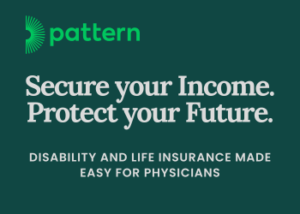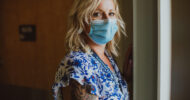As a new mother, working in an emergency department made me want to go home and childproof every nook and cranny of our house. On a daily basis at work I care for children, most often toddlers, injured at home in various ways. I learned of all the potential household dangers and how to keep my children safe.
I remember vividly caring for the 2-year-old girl who burnt her entire hand and arm with hot coffee after reaching up to grab mommy’s mug from the counter top. She screamed in pain and her mother felt so incredibly guilty for the honest mistake. After seeing that, I made sure to always keep hot liquids away from the edges of the countertop and never hold my children while drinking something hot.
I recall another toddler who climbed a TV stand and had the TV and stand fall on him. Luckily he had no major internal injuries and went home with only a few scrapes and bruises. Seeing that, I made sure to secure our TV and dressers to the wall so that they would never fall over on our kids. I also taught my children never to climb furniture as it could tip over and hurt them.
Another time there was a 2-year-old boy who fell down the stairs breaking his collar bone. The parents hadn’t installed a baby gate at the top of the stairs which could have prevented his fracture. They felt awful. We had a gate at the top of our stairs, but it was a reminder to always close the gate when my toddlers were upstairs.
On a different shift, there was the 3-year-old boy who touched a hot stove and burnt his hand. After seeing that, I made it a habit to always cook on the back burners of the stove and to teach my children that the stove is hot and never to touch it.
There were many children who would get into medicines that weren’t put away or pills that they would find at grandma’s house. From this I learned not only to put away medicines in locked cabinets at my own house but also at grandma’s house or any other home they might visit frequently. I also began teaching my kids that medicines are not candy and their potential danger. I made sure they knew that they should only take medicines when given to them by an adult. I also taught my kids about other household poisons such as cleaning solutions.
I can’t count the number of times I have seen small children with cuts to their foreheads or near their eyebrows after bumping into the sharp corners of a coffee table. Needless to say, we got rid of our wooden coffee table soon after my first child was born and replaced it with an ottoman. But putting foam bumpers on the table would have done the trick as well.
Once I remember being quickly called into a room for a one and half-year-old girl whose index finger was stuck in the sharp blade of a food processor. We were able to cut the food processor blade and pull it apart and off of her finger without lacerating it. I asked her grandmother, who was babysitting, how the little girl had gotten a hold of the food processor blade. Grandma explained that she was trying to make dinner and gave a box of kitchen utensils to the child to play with. She didn’t realize the food processor blade was in the box. It was a reminder to always keep sharp items locked up or on high shelves.
As much as we may wish we could, we can’t keep our children in protective bubbles. Accidents can happen so quickly. But we can have safeguards in place to minimize the risk of these accidents happening. Here are some things you can do to childproof your home:
- Always place small objects or choking hazards (such as marbles and coins) in locked drawers.
- Keep medicines in locked cabinets and use childproof medicine bottles.
- Store sharp objects in locked drawers or cabinets or on high shelves that children cannot reach.
- Get rid of blind cords and use cordless blinds.
- Use childproof knobs on doors that lead to the exterior of the house.
We also have to get in the habit of following certain best practices all the time. Once they become a habit they are easy to follow and take no extra effort.
- Always cook on the back burner of the stove.
- Keep hot liquids, food or pots out of children’s reach.
- Never hold children while drinking a hot beverage.
- Be sure to close baby gates when children are at the top of the stairs.
- Never leave a small child unattended in the bathtub.
- Always pay close attention anytime children are near water, whether a pool or body of water.
Also as your children get older be sure to teach them about household dangers.
- Teach them that the stove, oven and knives are only for adults to use.
- Teach your children that medicines are not candy and about other poisons in the home.
- Explain why they should not go outside the house without an adult.
- Also enroll your children in swimming classes as soon as possible. Every child should learn to swim for their own safety.
Most important of all, always have a responsible adult supervising small children at all times. It can only take a second for something tragic to occur. And remember the more you childproof your home and teach children about potential household dangers, the more you can relax and just enjoy your kids.
Archana Reddy is an emergency physician who blogs at Emergency Care for You. She can be reached on Twitter @AReddyMD.
Image credit: Shutterstock.com






























![How doctors can think like CEOs [PODCAST]](https://kevinmd.com/wp-content/uploads/Design-4-190x100.jpg)
